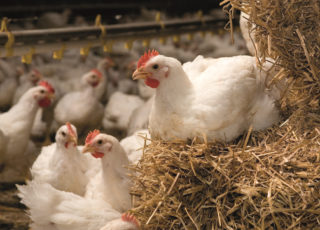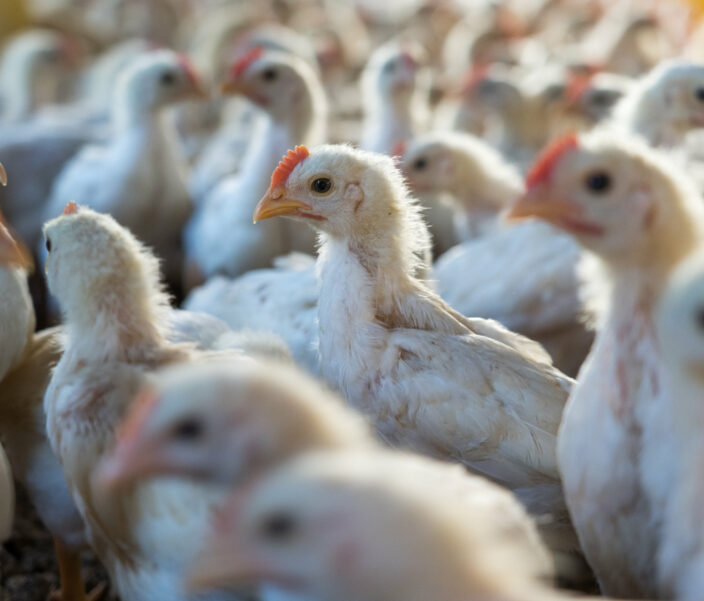Optimizing protein efficiency
Maximizing the self-regulating effect via the gastric pH, combined with effective and efficient antibacterial molecules, will reduce the total load of intestinal bacteria and their consumption of nutritional protein. Avoiding intestinal degradation because of pathogen overgrowth next to the sparing of the backup immune system will again increase protein availability for meat or egg production.

In non-industrialized environments, poultry is capable to select its nutrients in a balanced way to maintain good health and reproductive capacity. No chemical antibiotics are available as support in case of disturbances. Still under such circumstances chickens can produce good quality eggs, reproduce efficiently and grow good quality meat. How can they manage this? Poultry possesses self-regulating mechanisms dealing with the environmental risks and threats. Such mechanisms are e.g. a well-developed protective skin, growth of feathers and a good developed GIT-system. Moreover, the GIT should be capable of reducing bacterial, protozoal and viral threats. Additionally a complex and specific immune system is there to back up when first line defense fails.

Regulation of GIT-pH is key

One of the main self-regulating mechanisms is the regulation of the GIT-pH. The stomach in poultry has the lowest pH, ranging between 2.5 to 4, depending on the age and nutrition (composition, structure, consumption). This low pH is necessary to solubilize minerals such as calcium and to initiate digestion. The intestinal tract in poultry is very short compared to other livestock. To increase the passage time and this way digestion, an ingenious system of refluxes from the proximal part of the small intestine back to the stomach has been installed. The GIT-pH not only affects the activity of enzymes to digest nutrients but also acts as a gatekeeper to hold back pathogens. Again, a bigger gizzard combined with refluxes, resulting in an increased time present in a low pH environment, will benefit the capacity to control bacteria.

What not to do
Further reduction of the stomach pH would not be beneficial as it would require additional protection of the inner surface of the stomach. It would also cost extra energy to secrete pH reducing protons while most bacteria would not be extra affected. Pancreatic and intestinal enzyme secretion and activity might even be negatively affected hence further pH reduction of the stomach would not favor protein efficiency.

Preferred strategy
An improved protein digestibility should be accomplished by creating the optimum stomach and intestinal pH and by making sure that retention time is just enough to digest all protein. In addition bacteria which could survive the low pH in the stomach should be targeted with antibacterial compounds. Molecules which can destabilize the cell membrane of the bacteria and/or are able to penetrate through the cell membrane and causing leakage and/or have an antibacterial activity inside the bacterial cell (pH reduction, DNA intercalation) are the best option. This sniper principle would focus on pathogenic bacteria without causing too much collateral damage to the non-pathogenic bacteria surviving low pH (such as lactobacillus,…).
Solutions worth considering
Ready for improvement? Try one of our suggested solutions with a proven added value.

Contact your agrimprove expert
Do you have a question or want personalized advice? Your Agrimprove expert is willing to help. Reach out directly or request to be contacted at your convenience.


